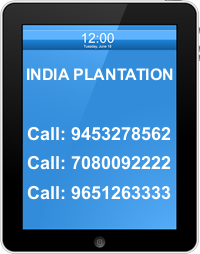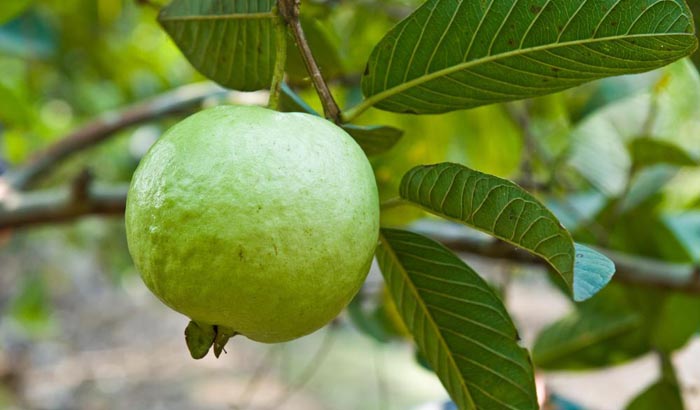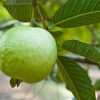Description
We are providing Guava Plant L-49, for more details call: +91-9651263333, 9453278562 or mail us on: info@indiaplantation.com
Guava fruit trees are not a common sight in North America and need a decidedly tropical habitat. In the United States, they are found in Hawaii, the Virgin Islands, Florida and a few sheltered areas in California and Texas. The trees are very frost tender and will succumb to a freeze when young, although adult trees may survive short periods of cold.
That said, the plants are attractive and produce deliciously rich, sweet fruits that are excellent fresh or in desserts. Given enough guava tree information, it is possible to grow these small trees in a greenhouse or sunroom and reap the benefits of their Vitamin C-rich fruits.
Guava Plants and Guava Tree Information
The guava fruit grows on a small tree with a wide, short canopy and a sturdy single to multi-stemmed trunk. The guava tree is an interesting plant with mottled greenish bark and long 3- to 7-inch serrated leaves. Guava trees produce white, 1-inch flowers that yield to small round, oval or pear shaped fruits. These are more accurately berries and have soft flesh, which may be white, pink, yellow or even red and varies in taste from acidic, sour to sweet, and rich depending on variety.
The guava plants thrive in any soil with good drainage and full sun for best flowering and fruit production.
Guava fruit trees are tropical to sub-tropical and may achieve 20 feet in height. Growing guavas require cold protection and is not suitable outdoors in most zones of the United States. They must have shelter from freezing winds, even in sunny warm climates where occasional icy temperatures occur.
Caring for a Guava Tree
If you are lucky enough to live in a region where guava plants grow outside, the tree should be planted in well-drained soil where its roots have room to spread.
Fertilize growing guavas every one to two months while young and then three to four times per year as the tree matures. Guava trees need a high amount of nitrogen, phosphoric acid and potash, along with some magnesium for maximum fruit production. An example is a formula of 6-6-6-2, worked into soils just prior to the onset of the growing season and then evenly spaced out three times during the growth period.
Water frequently after planting and then keep mature trees moderately moist during the blooming and fruiting seasons. Once established, caring for a guava fruit tree is similar to any fruiting tree care.
Guava

Cultural Information
Plant guavas in a sunny location sheltered from strong winter winds. They should be
kept moist and planted in a soil with good drainage.
Since guavas are tropical, they can be subject to frost damage. While the small
branches of the plants can be killed by heavy frost, the plant will regenerate the next
spring.
Planting
1. Dig a hole twice the size of the root ball.
2. Using E.B. Stone Planting Compost combine one part soil and one part planting
compost.
3. Place a small handful of E.B. Stone Sure Start in the bottom of the hole.
4. Make sure the top of the original root ball is one inch above surrounding soil.
5. Firmly tap soil to remove any air pockets.
6. Water in with Liquinox B1.
Fertilizing
1. Feed monthly with Grow More Super Bloomer or E.B. Stone Hibiscus and Tropical
Plant Food.
2. Apply Iron Supplement in late spring to correct mineral deficiencies.
3. An application of E.B. Stone Sul-Po-Mag in the fall will help make them more frost
tolerant.
Watering
Keep soil moist to the touch but don’t let them stand in water.
Care
The only pruning necessary is the removal of old or dying foliage and removal of suckers
from the base of the tree. Suckers look like new trees sprouting.
Any frost-damaged foliage should not be removed until all danger of frost is past.








